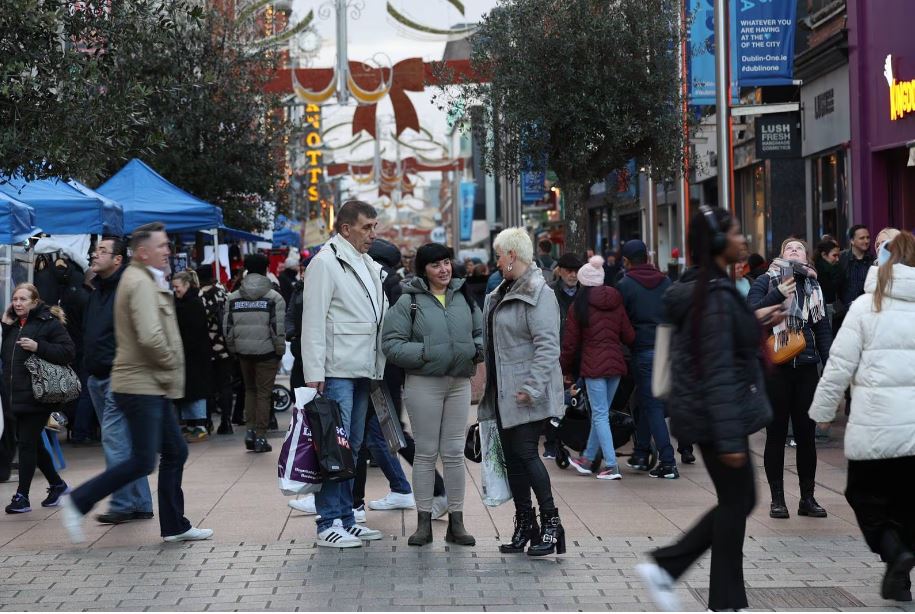High net worth individuals and family offices see long-term value in the High Street

The Irish high street has traversed a tumultuous decade, yet it appears to have regained favour among discerning investors. Emerging as a darling for family offices and high net worth individuals, the market is witnessing a surge in acquisitions of premium-grade assets, precisely when big institutions are divesting their holdings. This confluence of demand-and-supply dynamics has kept pricing in check, presenting a unique window of opportunity. But why is the current pricing considered favourable amid projections of decline in other sectors?
The recovery of the Irish high street commenced in 2013, coinciding with a shift towards positive consumer sentiment. However, the landscape was disrupted by a spate of UK retailer collapses, exacerbated by Brexit uncertainties, that dragged it back while the other sector of the market continued to surge forward. While these UK failures were primarily due to overexpansion in a weakened market and subpar retail offerings, their impact rippled across Grafton Street. At its nadir, nearly 20 units stood vacant or available for assignment, including premises that had been occupied by prominent brands such as Monsoon, Oasis and HMV.
In the aftermath of Brexit, these vacated spaces enabled Grafton Street to transform, as quality international lifestyle brands replaced their predecessors. These brands not only focused on in-store turnover but also utilised the physical space as a platform for online marketing and customer engagement. The influx of brands such as Victoria’s Secret, Rituals and Ray-Ban propelled Zone A rents from a low of €350 per sq ft in 2012 to a peak of €650 per sq ft by 2019. Supported by a low-interest environment, yields also experienced a substantial recovery from over 6 per cent in 2012 to approximately 3.5 per cent to 4 per cent by the end of 2019.
The onset of the Covid-19 pandemic triggered another reversal in this trajectory. Footfall on Grafton Street plummeted from 25.25 million in 2019 to 12.8 million for 2020-21, with Henry Street experiencing a similar downturn. Consequently, rents and yields recoiled once again. This setback was further compounded by successive interest rate hikes in the following year, leaving the high street grappling with a resurgence of challenges. So unlike other segments of the real-estate market, the high street never fully recuperated from the global financial crisis. Compounded by apprehensions surrounding ESG retrofitting and the rise of remote work, rents and yields have regressed to levels reminiscent of the late 1990s. Zone A rents for Grafton Street have dipped below €500 per sq ft, while Henry Street hovers around €250 per sq ft. Yields for Grafton Street exceed 5.5 per cent, with Henry Street surpassing 6 per cent. These levels were not helped by the recent Dublin riots, which despite possible material long-term benefits in terms of policing and general political focus on the city, further damaged the perception of the sector.
But paradoxically, the sector’s pricing defies its actual performance. Occupational demand remains robust, buoyed by a prosperous Irish consumer base bolstered by unprecedented savings and robust employment growth. Despite a disappointingly slow return to the office, footfall derived from core sources such as shoppers, tourists and students is nearing pre-pandemic levels. Moreover, the relatively low cost of making these assets ESG-compliant adds to the disparity in pricing compared to the office sector.
In 2023, Grafton Street witnessed 88 per cent of its 2019 footfall, with the lower end of the street slightly weaker at 77 per cent as final units were leased up. However, the real resurgence is observed on Henry Street, with footfall reaching 106 per cent of 2019 levels at the Mary Street end and 85 per cent at the O’Connell Street end. This weaker end of street is likely to benefit from the impending arrival of a number of game-changing retailers. These include the long-awaited conversion of the former Debenhams into an extended Zara, alongside Sports Direct, Flannels (or Frasier’s), and the imminent debut this summer of Decathlon and H&M in the former Clerys department store around the corner. The long-awaited redevelopment of the Hammerson Dublin Central site is also another big game changer on the horizon. This is why many are reading the data rather than the perception and getting in early on what is seen as a very low pricing ebb for quality long-term pension-grade assets.





